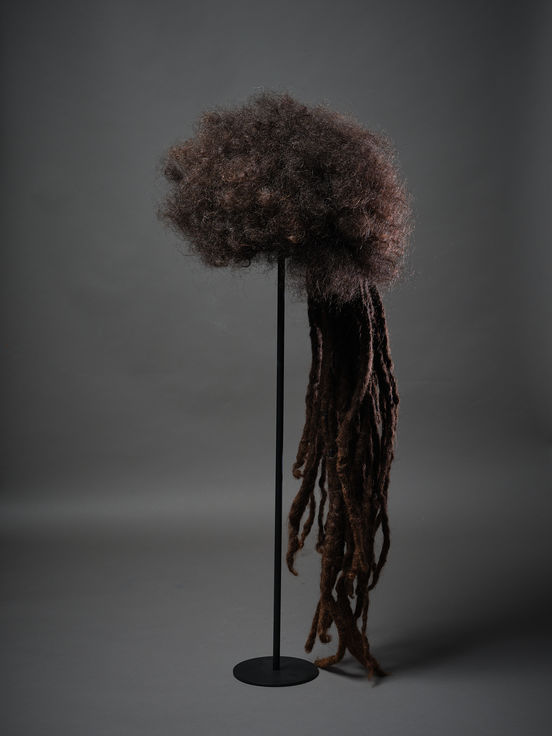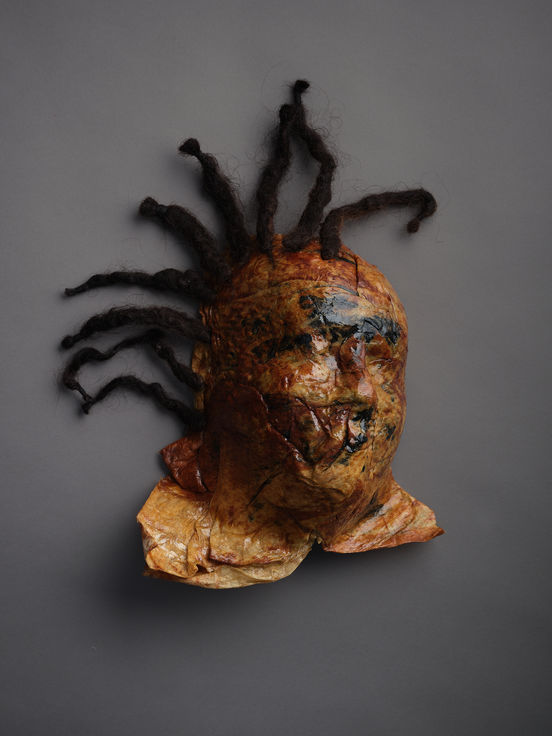Ulumate or ‘dead head’ describes the ancient practice of human hair wig-making by iTaukei (Indigenous Fijians), inactive in Fiji for two centuries.
Ulumate was traditionally observed during a time of mourning, when the drau-ni-ulu (hair) was cut and made into a wig, then worn until the hair beneath grew back. In pre-Christian Fiji, ulu cavu (hair wigs) were also worn in warfare. Post-colonisation, Qita (selected men) wore ulu cavu as they stood guard over the village plantation.
Na Tolu, an artist collective formed by Joana Monolagi, Ole Maiava and Daren Kamali, has been revitalising the practice of ulumate through research informed by ulu cavu held within institutional collections and historic images of iTaukei.
The Ulumate Project features objects and images created by Na Tolu over recent years reflecting the important making practices of iTaukei. This body of work responds to and re-poses objects and historic images from museum and research collections, to ensure the traditions of iTaukei are not forgotten.
Together with photographs, masks and masi, this exhibition features the first ulu cavu made in more than 200 years, woven by Joana Monolagi with hair collected from Daren Kamali.
Na Tolu dedicate this exhibition to Joeli Monolagi. His guidance and support was integral to the development of The Ulumate Project and we honour his memory.
—
Na Tolu is Joana Monolagi, Daren Kamali and Ole Maiava.
Joana Monolagi has been creating Fijian arts for about 20 years. She was born in the town of Ba, Viti Levu, Fiji; moved to Aotearoa New Zealand in 1978; and now lives in Pakuranga. Monolagi enjoys working with arts from her Fijian heritage such as masi (Fijian barkcloth) printing, creating Fijian costumes, teaching meke (dance) and telling Fijian stories.
Daren Kamali and Ole Maiava are multi-media artists, working together on the revival, research and making of modern-day ulu cavu. They formed the (UN)Registered Savages of Aotearoa in 2015. They have been working on the making of this first contemporary ulumate through research and collaboration with iTaukei artists and researchers in Aotearoa, Fiji and the world.

Na Tolu, Ulu cavu, 2021

Na Tolu, The Ulumate Project, 2022. Photographs by Sam Hartnett.



